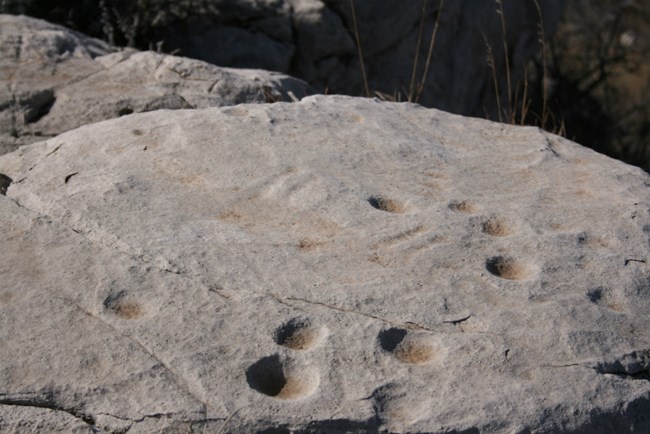
NPS Photo The Antelope Creek people lived in the Texas and Oklahoma panhandles between 1150 AD and 1450 AD. Here in Texas along this small section of the Canadian River, the Antelope Creek people dug hundreds of quarries over a period of three hundred years. Alibates flint exposed to the elements over a long period time becomes fractured and breaks incorrectly when being knapped. The Antelope Creek people realized that the underground flint is better quality than exposed flint, and superior for making into stone tools. Bison bone tools were used to dig down four to six feet below the surface to reach the Alibates flint. The flint was pried out of the dolomite layer and shaped into a two-sided piece of flint that could be carried, called a biface or quarry blank. The quarry blanks were then carried over to the village, approximately a mile away. Much of the flint was traded with other tribes. The Antelope Creek people are one of two Plains Village cultures to use masonry in their homes; early archaeologists thought that the Antelope Creek people had come from the New Mexican Pueblo Indians, but it is now believed that they came from eastern Woodland tribes. The Antelope Creek people apparently left the Texas Panhandle abruptly around 1450 AD, perhaps forced to leave by drought conditions, disease, or hostile Apaches. They may have gone east and joined other Caddoan-speaking tribes, such as the Pawnee or Wichita. |
Last updated: January 12, 2016
